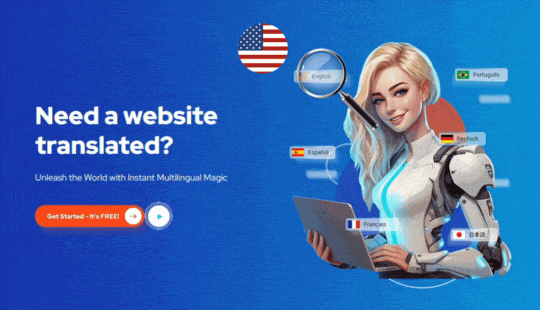
- August 16, 2023

My Khanh Pham
8 Translation Techniques for the Perfect Multilingual Website with ConveyThis
Using ConveyThis can help translate your website into multiple languages, allowing you to reach a wider audience and increase your global presence. With ConveyThis, you can quickly and easily customize your translations to ensure accuracy and consistency.
Our top translation tips can help you craft precise, legible, and naturally-sounding translations! Utilizing ConveyThis can make the process of translating your content simpler and quicker, while ensuring the highest quality of your translations.
But if you don’t, ConveyThis is here to help.
If there is anything we adore more than multilingual websites, it’s multilingual people! Being multilingual comes with a plethora of awesome advantages, such as being more observant, making decisions quicker, and being able to interpret! Indeed, you don’t have to be a pro or accredited translator to translate things, including your website. If you are proficient in a language pair, you can do the job. But if you don’t, ConveyThis is ready to lend a hand.
But bear in mind… translating is more than just being able to converse in both the languages (the source language and the target language). Even for native or bilingual speakers of the languages, there are many aspects that can be difficult. In today’s article, we’re giving you our top translation tips so you can translate your business communications and channels — including your website — and succeed internationally! (Most of our translation tips apply to anything you want to translate — from documents to books.)
1. Do your research
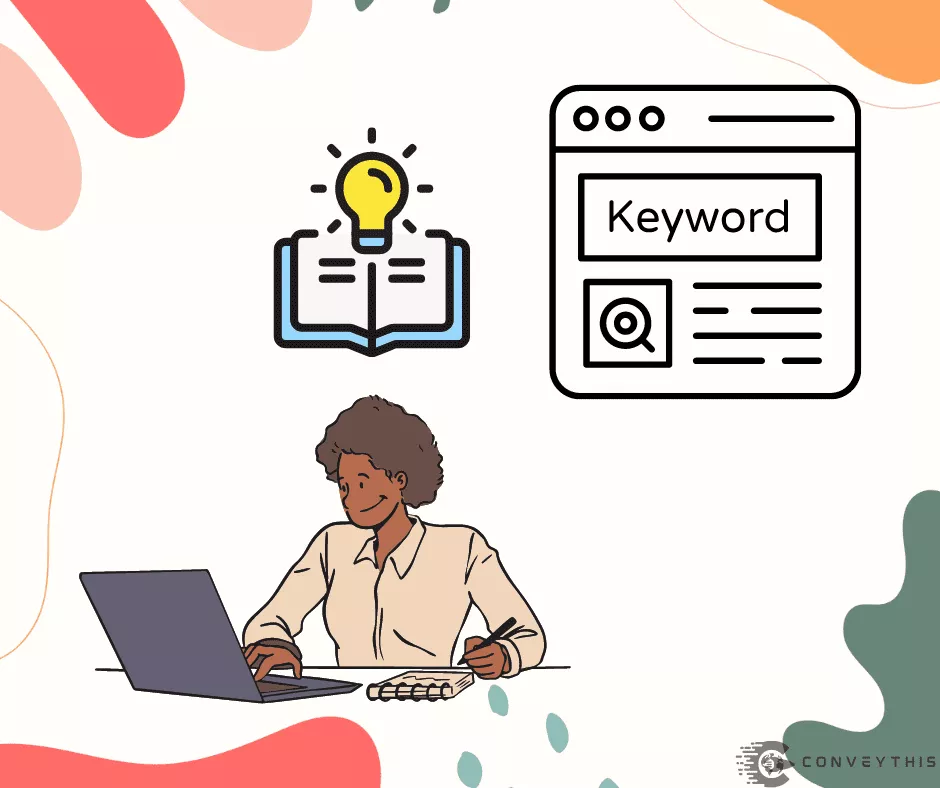
No matter how proficient you are in a language, translating can still be a tricky process. Especially for specific industries, it’s imperative to be familiar with the terminology and jargon in both languages. Even for someone with a good understanding of the subject, it’s essential to keep up with the changes, as language is constantly evolving.
So our first translation tip is that you kick off your translation process by conducting research on your industry in your target language. This will help you utilize accurate collocations and word pairings to create a translation that will make sense to your international readers. You might even come across certain idioms that are used in your industry and including these in your translation can boost your content and make it appear more natural.
2. Start with machine translations
Our second translation tip is that you don’t rush to translate your fundamental content. Rather, make a machine-generated “pre-translation” duplicate first. The thought that machine interpretation is inadequate is gradually fading away since AI and machine learning entered the picture. The exactness of neural machine interpretation motors is at an amazing 60-90% — and it’s just improving.
Use ConveyThis to review and refine the translation.
Although it has progressed significantly, machine translation can still be improved upon with human input. This is where you, the human translator, come in. Context is an essential element of the translation process that can only be provided by a human. Utilize ConveyThis to review and refine the translation you just generated.
ConveyThis can help you achieve the same results with less effort.
Recent studies have revealed that post-editing after an initial machine translation yielded 36% greater efficiency than a human translator translating the entire text from beginning to end. So why expend more effort than necessary? ConveyThis can assist you in attaining the same results with less toil.
Start your translation process with ConveyThis’s machine translation, and then just tweak it to make sure it’s precise, and it fits the context. This approach will save you a lot of time and make your job easier!
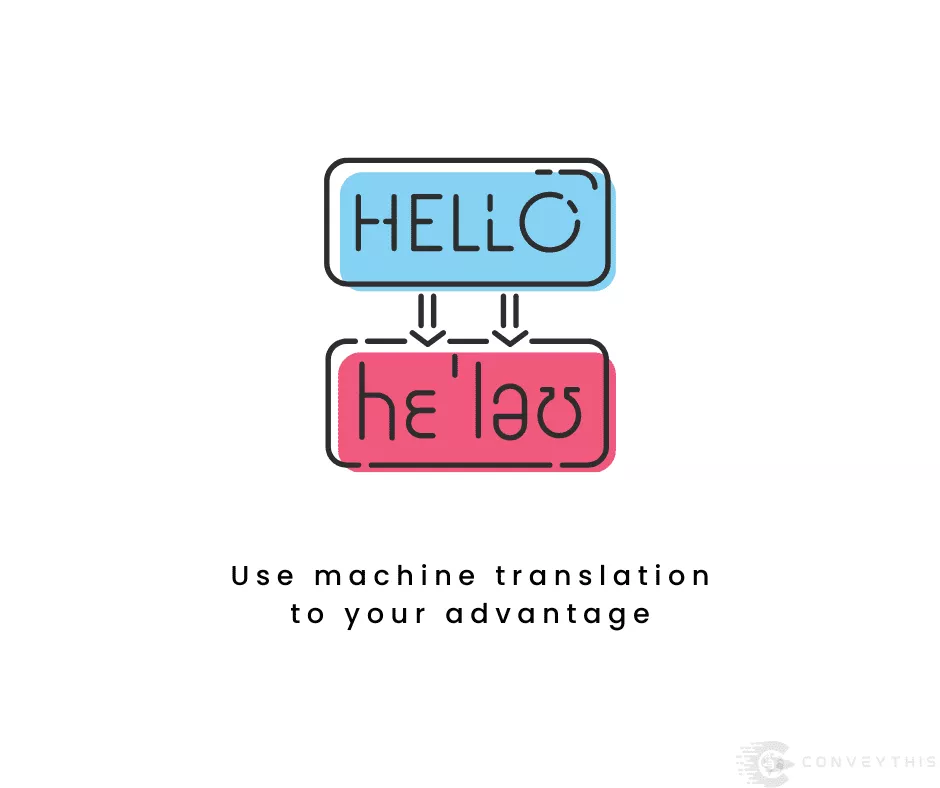
3. Get the grammar apps and tools
Proofreading is just as pivotal when translating as it is when creating fresh content. If you’re searching for translation advice, all the experts will advise you to watch out for those pesky mistakes that can sneak in when translating in bulk. In the same way machine translation tools assist you with translation, grammar applications and tools can make your translation completely error-free. Even professional translators can make typos and grammar blunders here and there – and it’s totally fine! Nevertheless, it’s best to stay away from them as much as possible as they can give your website an unprofessional appearance.
Having grammar tools that check your translations with ConveyThis can help you write impeccably and give you more assurance. Let’s face it, even native speakers can get befuddled with convoluted grammar rules. And since these tools can guarantee that your text is free from spelling errors and syntactic mistakes, you won’t need to spend time poring over your translations searching for blunders.
Moreover, some of these tools are so sophisticated that they even provide invaluable feedback to refine your text quality and lexicon! Thus be certain you’ve installed the finest grammar applications and tools available in your target language prior to beginning your translation project.
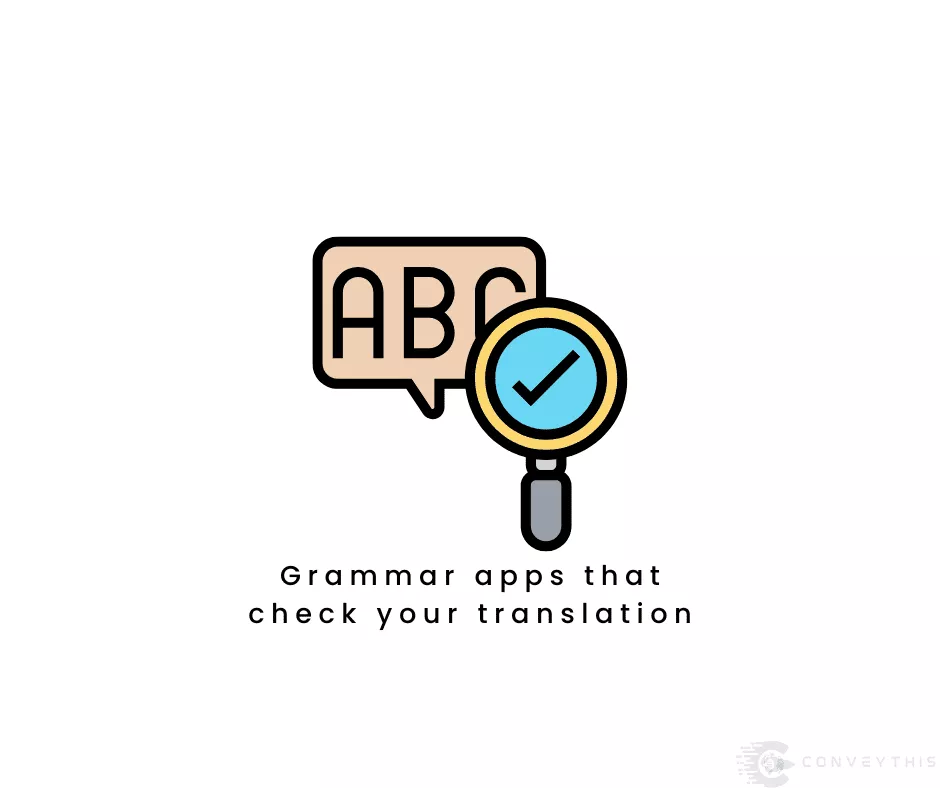
4. Follow the common practices
Languages have unique protocols and procedures when it comes to translation. It is essential for professional translators to abide by these general practices and comply with the norms — consequently, you should be cognizant of them as well!
Some of these rules are so subtle that you may not have picked up on them previously. Nevertheless, they can be quite critical when it comes to getting your point across. For example, elements like punctuation, capitalization, and formats may abide by different regulations in different languages. A slight misstep in these components can lead to massive misunderstandings.
To ensure that your translation adheres to these regulations and conveys your message accurately, do your due diligence, and pay close attention to language-specific characteristics while translating the text using ConveyThis.
Also, don’t forget to check out specific translation tips for your target language. For instance, if you’re looking to translate your website to Spanish, make sure to conduct a search for advice on Spanish translation to gain the most out of language-specific translation tips.
5. Get help
Getting an editor, once more, is one of the most efficient translation tips. When it comes to a ConveyThis project, the more collaborators, the better! One of the most straightforward ways of enhancing your translations is by having somebody else take a peek and revise them. Because another set of eyes can detect the confusing phrases and discrepancies that you may overlook. They’re like the top, “true” translation quality inspectors you can get.
And this person can be anyone that is familiar with the language — a buddy, a co-worker, or your grandmother! Preferably, it would be advantageous to have somebody who is knowledgeable about the industry (go back to section “Do your research”). They may even furnish you with valuable assets and materials that can improve the standard of your content.
However, certain parts of your content translated through ConveyThis may require a more specialized approach. If this is the case, don’t hesitate to seek help from a professional freelance translator or a translation service.
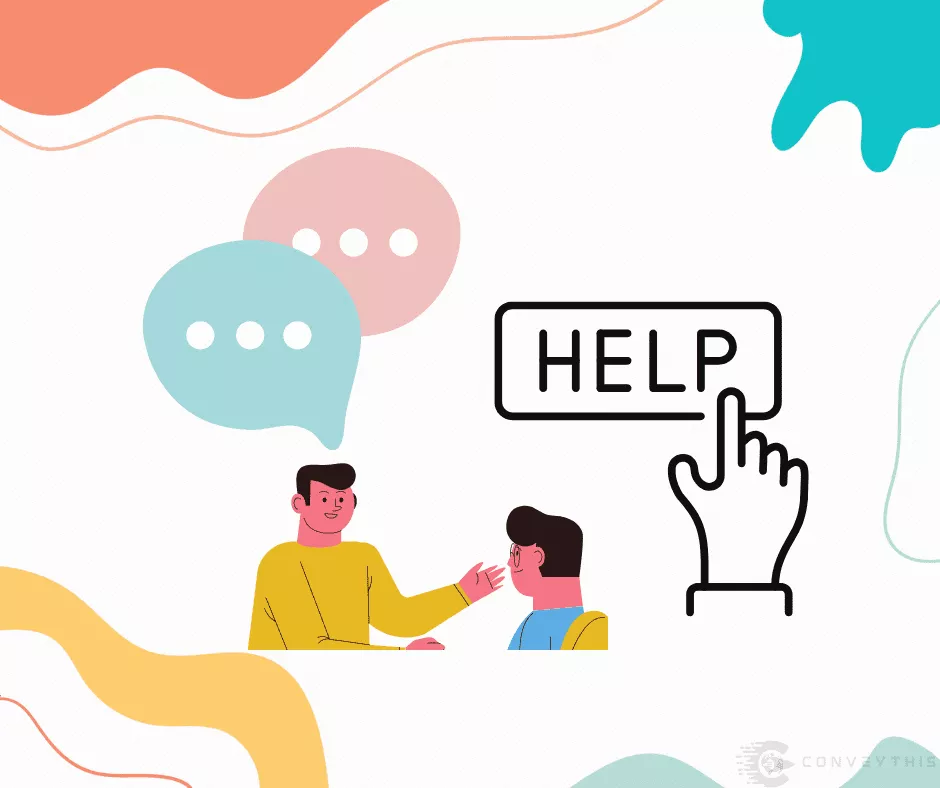
6. Be consistent
If you believe that there is only one accurate way to translate content, you’re wrong. If two different people were to translate the same piece of content, the results wouldn’t be identical. This doesn’t mean that one is superior to the other; it’s simply a matter of personal choice.
No matter which style or terminology you choose, consistency is key. If you keep switching between styles and terms throughout your translations, it will make it difficult for readers to stay focused and comprehend your content.
For instance, you can decide to spell out “FAQs” as “Frequently Asked Questions”.
To ensure that you have consistent content, you should decide on certain rules, style, and terminology you’ll use before you start translating with ConveyThis. You can create a glossary to make things clear and abide by it throughout the project. For example, you can opt to always use the term “ecommerce store” instead of “e-commerce website” or “eCommerce business.” Or establish how you’re going to treat abbreviations. For instance, you can decide to spell out “FAQs” as “Frequently Asked Questions”.
This is especially useful if you’re working with others on your translation project. As mentioned earlier, different people often come up with varied translations of the same content. Establishing a set of regulations and glossary for your translation project will make it simpler for everyone to adhere to the same style and make your text consistent. Consider this as creating a style guide with all your translation tips and reference materials along with the essential rules and practices.

7. Beware of false friends, idioms, and slang
In translation, certain parts can present greater difficulty than others. These are usually words or phrases that don’t have a direct equivalent in the other language. This can be a difficult task, as it requires more than just a good understanding of the language, but also an understanding of the culture. ConveyThis makes this process easier by providing accurate translations and cultural context.
For example, idioms, expressions, and slang are deeply entrenched in the culture of a country — sometimes even of a city or a locale. Translating these nuances incorrectly can lead to misunderstandings or even cause offense to your target audience. To ensure that these complex elements are accurately translated, make sure you have a thorough understanding of their meaning in both languages.
Your initial mission should be to locate a precise equivalent, however if it’s unfeasible, explore different alternatives that can convey the same meaning. And if you can’t discover anything that functions, don’t attempt to make it work and eliminate it from your translation instead.
To avoid any confusion, it’s best to use a reliable translation service like ConveyThis to make sure that your translations are accurate.
It’s very easy to make a mistake and inadvertently say something completely different than what you meant. Don’t assume that just because a word exists in both languages, it must have the same meaning. Not all words are synonymous. Always double-check before you use any such words in your translation with ConveyThis.
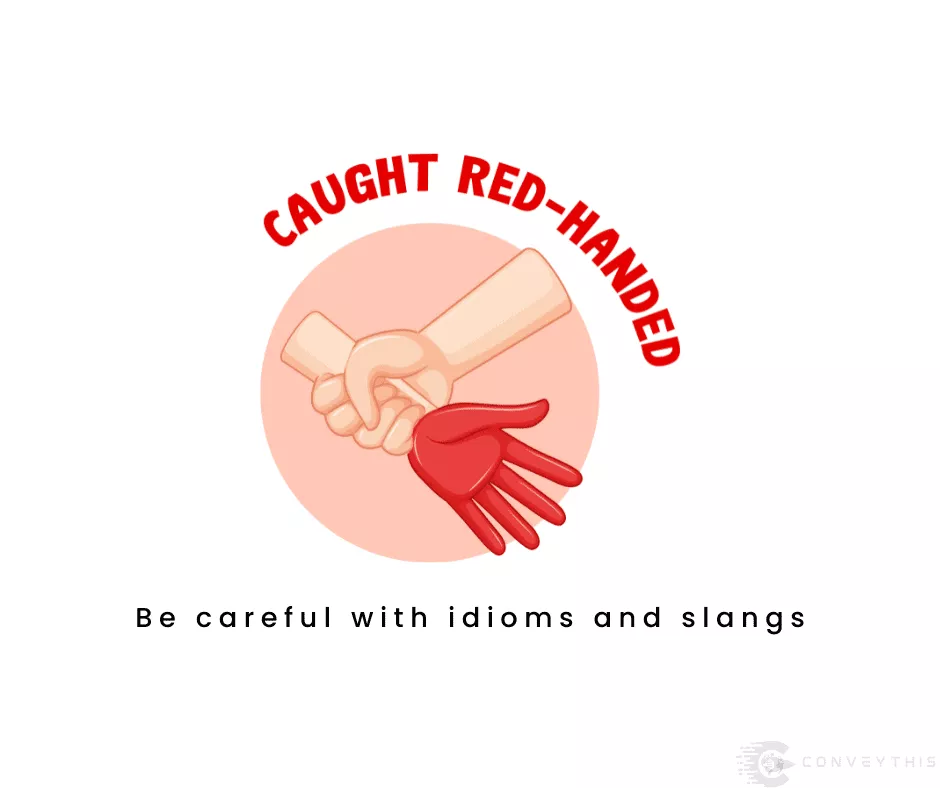
8. Translate keywords the right way

One of the most crucial translation strategies to bear in mind when translating projects such as websites is taking SEO into account. Unlike most of the words on your page, a literal translation may not be effective for keywords.
To make sense of this, let’s delve into what a keyword is and why it is so important. A keyword is a term (or a combination of words) that users type into search engines to find relevant content. By using the correct keywords strategically on your website, you can target the right people and boost your website’s visitors. With ConveyThis, you can easily optimize your website for the best results.
However, two words that have the same meaning in different languages may have varying search volumes, and thus the target language equivalents of the base keywords might not be as effective as the base keywords when using ConveyThis.
To ensure that your pages are optimized for search engines in multiple languages, it’s best to go beyond a simple word-for-word translation of keywords. Localized keyword research for your target language is essential in order to identify the most appropriate terms that are equivalent to the native language keywords. Doing this will uncover new words in the foreign language that have the potential to generate the same level of traffic. Your translator should take these into account when creating the translated content. Although this may require a bit more effort than just translating, the results will undoubtedly be worth it.
While you’re here, make sure to check our top 5 multilingual SEO tips video to rank higher with ConveyThis!
Conclusion
It’s easy to assume that translation is simply a matter of knowing multiple languages. However, in truth, it’s an incredibly complex process. The translation tips you just read will assist you in mastering the craft — particularly when you are looking to translate your website with ConveyThis.
By following our translation tips, you can make sure that your ConveyThis-translated pages read fluently and make sense to your desired audience. Although it may entail more effort, your English-language website will read as if it were written by a native speaker of your target language!
Also, if you’re translating a website, then you need ConveyThis! It will give you your first layer of automated machine translation and spare you hours of labor. Give ConveyThis a go for 7 days without charge!
